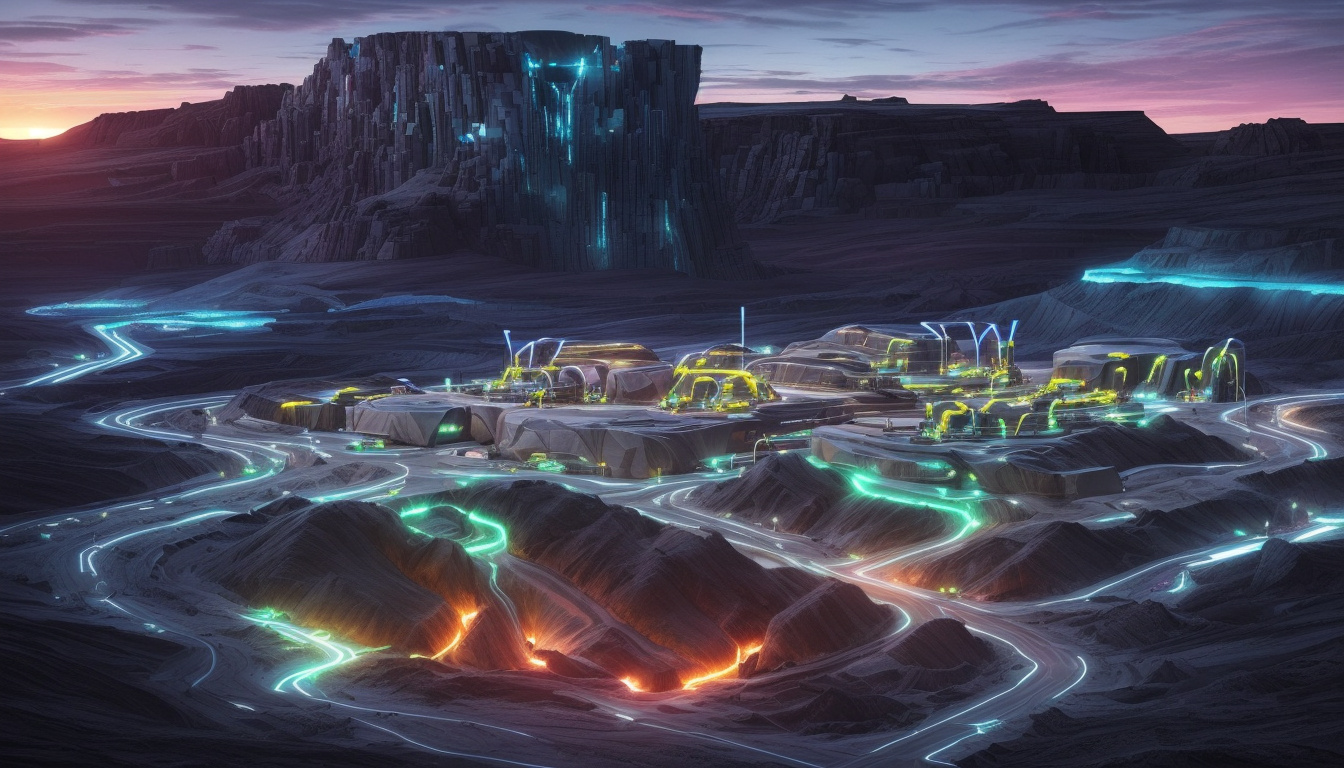Innovations in Charging Technologies Propel Electrification in Mining Industry
By Claire Jenns | June 27, 2025
The mining industry is witnessing rapid transformation as electrification gains momentum, supported by significant advancements in charging technologies. Battery electric vehicles (BEVs) are becoming increasingly common in underground and surface mining operations, reshaping the landscape of mining efficiency and sustainability. However, despite promising progress, challenges remain—most notably the need for interoperability across different vehicle types and charging infrastructure.
Growth of Battery Electric Vehicles in Mining
According to data from GlobalData, nearly 400 BEVs were in operation worldwide by the first quarter of 2025. This uptick underscores the sector’s commitment to reducing carbon emissions while enhancing operational productivity. Large mining companies are actively exploring innovative charging methods designed to support the energy demands of these vehicles, ensuring continuous operation without significant downtime.
Fast Charging and Dynamic Charging: Enhancing Operational Efficiency
One of the primary priorities in electrification is minimizing the time vehicles spend off the road during charging. Fast charging technology, especially prevalent in underground mining, optimizes vehicle productivity by scheduling charging during worker breaks, effectively reducing downtime.
Ben Ting, Chief Commercial Officer of Echion Technologies—a spin-out from the University of Cambridge backed by niobium miner CBMM—explains that the industry benchmark for fast charging is about one hour daily out of a 24-hour cycle. Though efficient, fast charging entails stationary vehicles which can limit operational fluidity, especially given the preparation needed to connect and disconnect large cables to ultra-class BEVs that house batteries exceeding one megawatt-hour (MWh).
To address these limitations, dynamic charging has emerged as a promising alternative. This technology enables vehicles to charge while in motion, typically via overhead catenary systems that can deliver 6–8 MWh of power. Bruce Warner, Global Transportation Segment Manager at Hitachi Energy, notes that while charging solutions for smaller vehicles are mature, dynamic charging for large haul trucks requires further development and investment before becoming widely viable.
Nic Beutler, Global eMine Mining Solutions Manager at ABB, emphasizes the benefits of modularity and scalability in charging infrastructure. “Mines can begin with small-scale implementations of electrification technology, validate performance, and scale incrementally—reducing risks and upfront capital concerns,” Beutler states.
Addressing the Interoperability Challenge
A persistent obstacle impeding widespread adoption of electrification solutions is the lack of interoperability between different charging systems, vehicle types, and mining sites. Diverse fleets containing equipment from multiple original equipment manufacturers (OEMs) necessitate unified charging standards to avoid escalating costs and complexity.
The Charging Interface Initiative (CharIN), an association advocating for unified global charging standards, is collaborating with the International Council on Mining and Metals (ICMM) to overcome this barrier. CharIN’s technical project manager, Daniela Soler, highlights their roadmap toward harmonizing three complementary technologies:
- Ruggedised Megawatt Charging System (R-MCS): Designed for high-power static charging applications.
- Dynamic Charging Interface (DCI): Supports in-motion charging solutions enhancing operational uptime.
- Extreme Megawatt Charging System (X-MCS): Aims for ultra-fast, OEM-agnostic charging suitable for large haul trucks.
“Interoperability remains our top priority,” Soler remarks. “Mining operations operate in diverse climates and conditions with mixed fleets. Proprietary charging systems for each OEM or site increase complexity and risk considerably.”
Bryony Clear Hill, Innovation Director at ICMM, underscores the importance of standardization, stating that it’s critical for deploying high-power chargers and dynamic energy transfer systems essential to mining’s demanding environments.
The Role of Digitalization in Charging Infrastructure
Digital intelligence is becoming a key component of next-generation charging infrastructure. Currently, most systems operate reactively: vehicles plug in, charge, and move on without adaptive management of energy loads.
“Smart infrastructure needs to integrate with fleet scheduling, power network demands, and balance energy supply, including renewables,” explains Nic Beutler. This digital integration will enhance the optimization and resilience of mining electrification.
Emerging Industry Efforts and Pilot Projects
Major mining companies continue to spearhead innovation in charging technologies. Fortescue Metals Group, a pioneer in mining electrification, received a A$10 million (US$6.48 million) grant from the Australian Renewable Energy Agency at the end of 2024 to develop 6MW fast chargers for heavy BEVs. This initiative builds upon Fortescue’s prior prototype achievements and signals a commitment to expanding fast charging infrastructure.
Meanwhile, Newmont’s Borden gold mine in Canada is moving toward becoming the world’s first fully electrified underground gold mine, reflecting growing confidence and practical progress in mining electrification.
Looking Ahead
While charging technologies for mining are advancing swiftly, experts caution that standardization should follow experimentation. “The industry should test various approaches before deciding on universal standards,” says Ben Ting. Such measured steps will ensure innovation thrives while enabling seamless scalability and interoperability.
In summary, the development of fast, dynamic, and hybrid charging solutions is accelerating the shift toward cleaner, more efficient mining operations globally. Overcoming interoperability challenges and integrating digital intelligence remain critical for realizing a fully electrified mining future.
This article is based on insights from industry experts and reports supplied by GlobalData and affiliated organizations.










